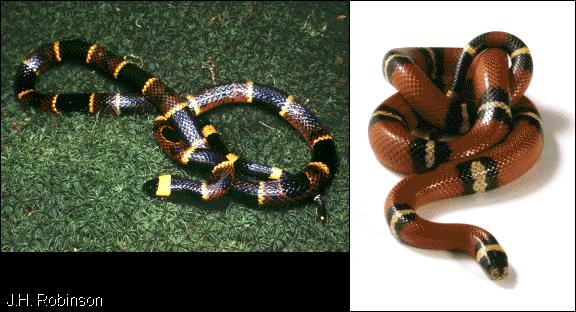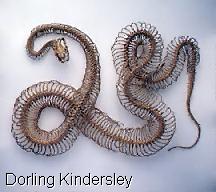

In areas where their ranges overlap, some snakes mimic each another in order to avoid predation. The nonvenomous Sinaloan milk snake (right), for example, closely mimics the color pattern of the venomous coral snake. The strategy is a successful one, for even young, inexperienced snake-eating birds have been shown to instinctively avoid a pattern of alternating red and yellow rings.
J.H. Robinson/Photo Researchers, Inc. Dorling Kindersley Snake Mimicry," Microsoft® Encarta®. Copyright © 1993-2002 Microsoft Corporation.

Dorling Kindersley Skeleton of a Snake," Microsoft® Encarta®. Copyright © 1993-2002 Microsoft Corporation.
